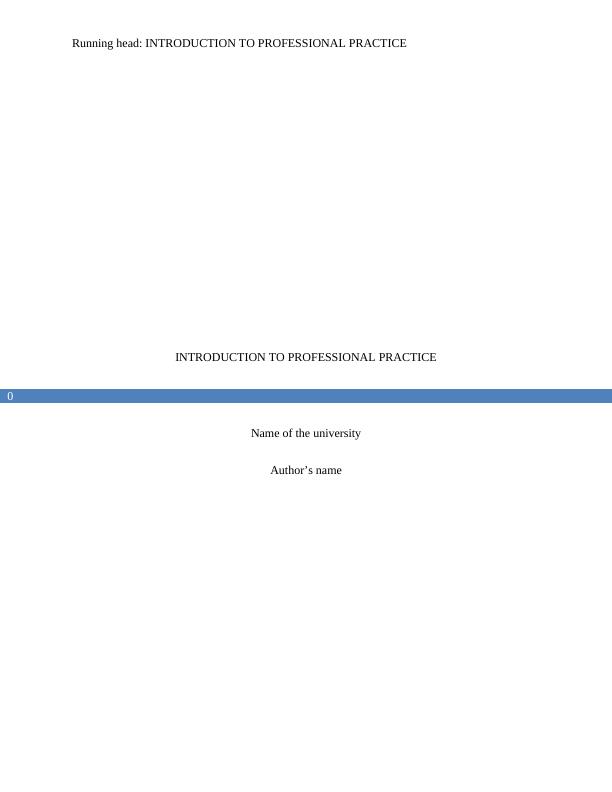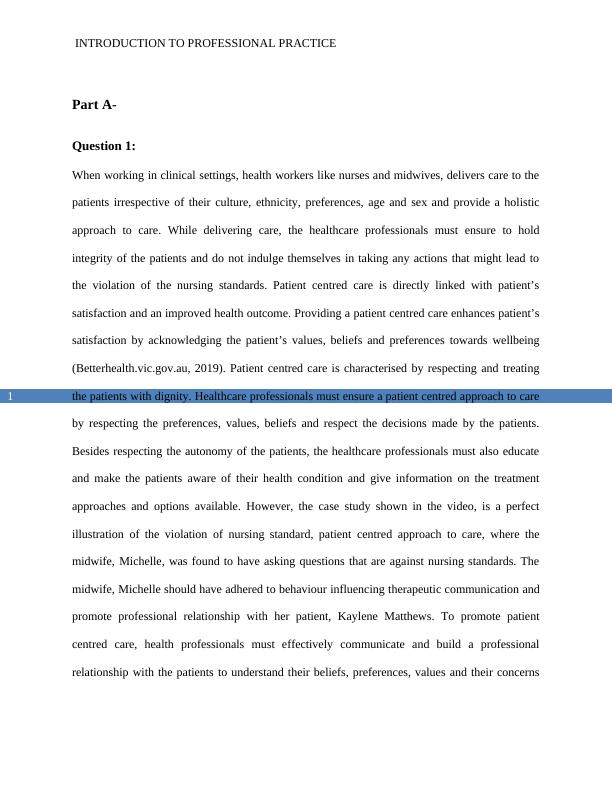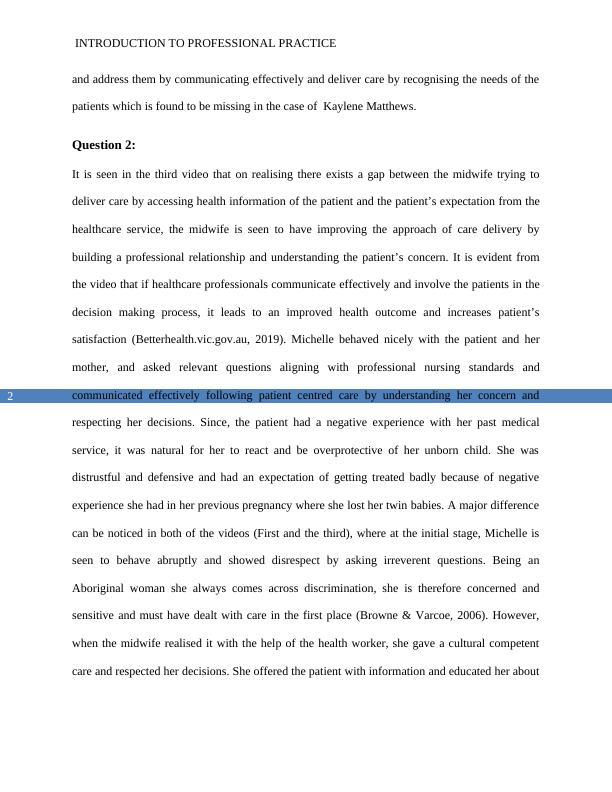Assignment (Doc) | Professional Practice
This assessment task is divided into Part A, Part B and Part C. The task requires the completion of all three parts and all questions within each part. The assessment involves analyzing issues and improvements in including patients as active participants in healthcare, demonstrating cultural sensitivity, and discussing communication strategies. The completed assessment must be submitted through the Turnitin Link in the Assessment Section of the Moodle.
Added on 2022-10-07
Assignment (Doc) | Professional Practice
This assessment task is divided into Part A, Part B and Part C. The task requires the completion of all three parts and all questions within each part. The assessment involves analyzing issues and improvements in including patients as active participants in healthcare, demonstrating cultural sensitivity, and discussing communication strategies. The completed assessment must be submitted through the Turnitin Link in the Assessment Section of the Moodle.
Added on 2022-10-07
End of preview
Want to access all the pages? Upload your documents or become a member.



